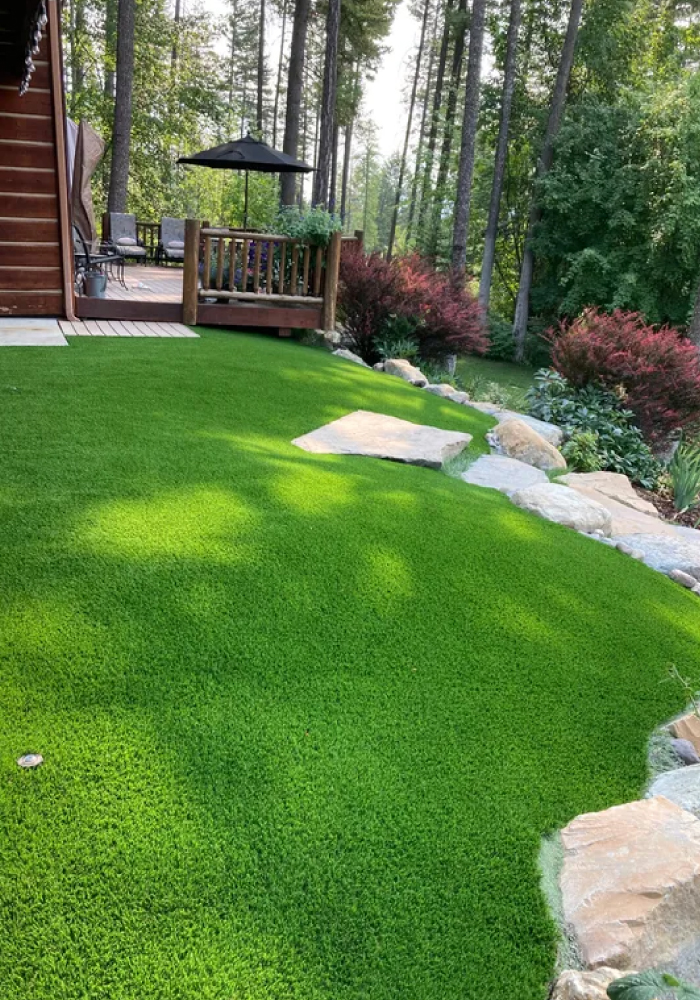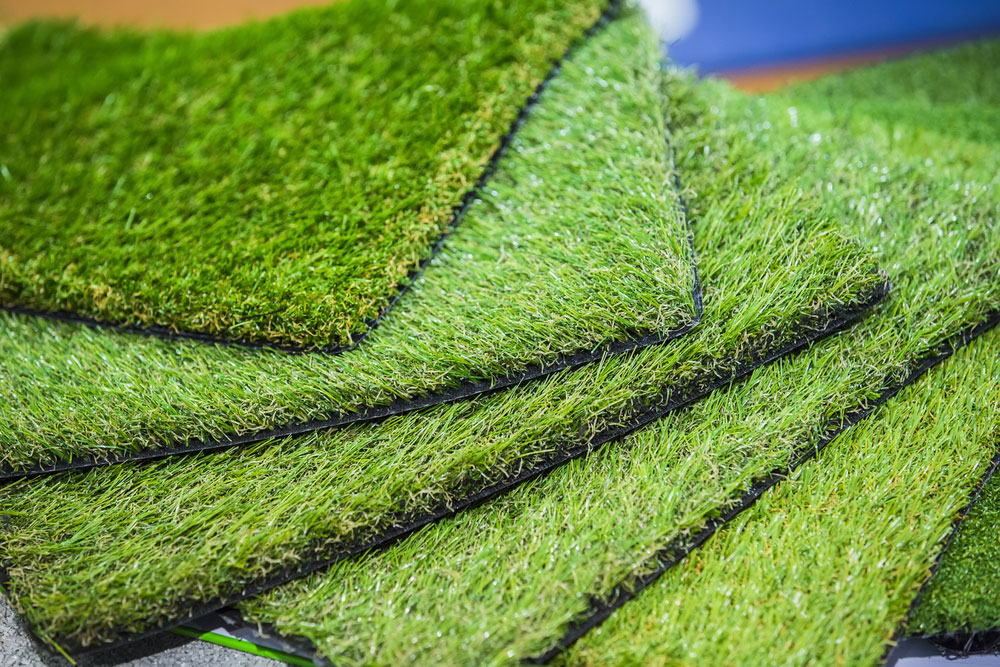Explore the Environmental Conveniences of Opting for Artificial Turf Solutions
The adoption of synthetic turf remedies presents an engaging chance to address pressing ecological challenges. By substantially reducing water usage and decreasing the application of harmful chemicals, these options not just promote lasting landscaping however also safeguard local communities. Moreover, the lower carbon impact connected with decreased upkeep activities adds to a more lasting approach to land administration. However, the ramifications of these benefits expand beyond simple preservation initiatives, questioning regarding their long-lasting influence on habitat conservation and general environmental balance. Checking out these measurements exposes a complex interaction worth considering.
Water Preservation Benefits
Among the most significant benefits of synthetic grass is its capability to conserve water. Typical grass lawns need considerable watering, particularly in areas prone to dry spell or water constraints. In contrast, man-made turf does not need watering, substantially lowering the total demand for water sources. This function is specifically beneficial in deserts where water deficiency is a pushing worry.
By removing the requirement for routine watering, synthetic grass contributes to sustainable landscape practices and aids alleviate the ecological influence of too much water consumption. Furthermore, the preservation of water encompasses the decrease of runoff, which can bring about dirt erosion and waterway contamination.
Furthermore, the installation of artificial grass enables municipalities and property owners to allocate water sources much more efficiently, concentrating on essential uses such as drinking water and farming. The shift in the direction of synthetic grass not just advertises responsible water usage yet also straightens with more comprehensive ecological goals focused on protecting all-natural resources.
As communities progressively focus on sustainability, the water conservation advantages of man-made lawn provide an engaging situation for its adoption in domestic and industrial landscaping projects.
Lowered Chemical Use
The transition to synthetic grass significantly decreases the reliance on chemical therapies generally made use of in all-natural yard upkeep. Conventional lawn management commonly entails the application of pesticides, herbicides, and fertilizers to promote development and control insects. These chemicals can pose threats to human health and wellness, local wildlife, and the environment, adding to dirt and water contamination.
In comparison, artificial grass eliminates the need for these damaging substances. By lessening the release of synthetic compounds into the ecological community, synthetic lawn advertises much healthier soil and water systems.
In addition, the absence of chemical runoff connected with synthetic grass setups aids safeguard neighborhood rivers from air pollution, supporting water life and preserving biodiversity. Arizona artificial turf. As neighborhoods increasingly prioritize lasting techniques, opting for man-made grass offers a feasible service that straightens with ecological conservation goals. Through this shift, homeowner can appreciate rich green spaces without jeopardizing ecological health and wellness, leading the way for an extra sustainable future
Lower Carbon Footprint

In addition, the setup of synthetic grass can result in significant water conservation. All-natural yards require considerable amounts of water for watering, which not just includes in the carbon footprint associated with water removal and treatment but likewise stress regional water resources. On the other hand, synthetic grass requires minimal maintenance, requiring no watering, therefore substantially minimizing water usage and its linked energy prices.
In addition, the long life of synthetic grass adds to its reduced carbon impact. With a life-span of approximately 15 years or more, the requirement for frequent replacements is reduced, causing less waste and reduced energy consumption in production and throwing away conventional yard choices. In general, synthetic grass offers a lasting option for ecologically conscious landscaping.
Environment Conservation
Environment preservation is an important factor to consider in the debate over landscape design choices, especially when comparing synthetic grass to all-natural turf. Natural yard yards commonly need comprehensive maintenance, consisting of making use of fertilizers, herbicides, and chemicals, which can detrimentally influence regional environments. These chemicals can seep right into the soil and waterways, harming indigenous vegetation and animals and interfering with local habitats.
On the other view it now hand, synthetic grass presents an opportunity to reduce the ecological footprint of landscape design. By choosing artificial grass, property owners can lessen the interruption of natural environments connected with conventional lawn treatment methods. Synthetic grass eliminates the demand for dangerous chemicals, therefore shielding neighboring wild animals and maintaining the honesty of bordering ecosystems. The installment of man-made turf can lead to the conversion of previous yard locations into more biodiverse landscapes, such as pollinator yards or indigenous plant areas, which can support neighborhood wildlife.
Eventually, the transition to artificial grass not just conserves water and reduces maintenance initiatives yet likewise promotes a much more harmonious partnership between human activities and the native environment, advertising environment conservation while doing so.
Long-Term Sustainability
Lasting sustainability is a critical aspect in evaluating the benefits of synthetic grass over standard yard lawns. One of one of the most significant benefits of synthetic grass is its durability; it can last approximately 15-20 years with minimal maintenance, whereas natural turf needs frequent reseeding and replacement. This longevity minimizes the demand for continuous resources, such as water, plant foods, and pesticides, which are essential for preserving a healthy yard yard.
Furthermore, synthetic grass adds to a decrease in carbon exhausts connected with grass care tools. Typical grass frequently require gas-powered lawn mowers, leaners, and blowers, every one of which add to air pollution. Turf installation phoenix az. On the other hand, man-made grass eliminates the demand for such devices, promoting a cleaner environment
Moreover, the manufacturing of fabricated lawn significantly uses recycled products, enhancing its sustainability profile. As suppliers take on environmentally friendly methods, the ecological impact of artificial lawn continues to lessen.

Final Thought
The adoption of fabricated turf solutions presents considerable environmental benefits, consisting of significant water conservation, decreased dependence on hazardous chemicals, and a reduced carbon impact. Synthetic lawn aids in preserving all-natural environments by reducing land disturbance and advertising lasting sustainability with the use of resilient products. Jointly, these elements emphasize the potential of synthetic turf to contribute positively to ecological wellness and supply a feasible you can look here alternative to standard landscape design techniques in a significantly resource-conscious globe.
In contrast, man-made lawn does not require watering, significantly reducing the overall demand for water sources. By lessening the launch of artificial compounds right into the ecological community, man-made grass promotes much healthier soil and water systems.
In addition, the installment of artificial lawn can result in considerable water conservation. In comparison, you could try this out fabricated turf requires marginal maintenance, calling for no watering, consequently significantly decreasing water use and its connected power prices.
